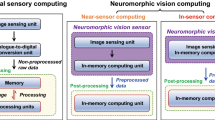Abstract
The traditional motion monitoring system can only provide limited information and cannot meet people’s requirements for details and accuracy. Therefore, the purpose of this paper is to develop an optical detection system based on fuzzy decision algorithm, which aims to achieve accurate and comprehensive acquisition of motion performance data and provide reliable monitoring performance in practical applications. A fuzzy decision algorithm is used to process optical signals and extract motion performance data. By establishing a suitable fuzzy rule set, the optical signal is transformed into real motion data, and the accuracy and reliability of the algorithm are verified by experiments and tests. The experimental results show that the optical detection system based on fuzzy decision algorithm can accurately collect motion performance data and has good monitoring performance. The system can maintain stable work under different lighting conditions, accurately capture and analyze the details in motion, and the system can meet people’s needs for accuracy and comprehensiveness, and show good performance in practical applications.






Similar content being viewed by others
Data availability
The data will be available upon request.
References
Bian, M., Peng, B., Wang, W., Dong, J.: An accurate LSTM based video heart rate estimation method. In Proceedings of the Chinese Conference on Pattern Recognition and Computer Vision (PRCV), pp. 409–417, Springer, Xi’an, China, November (2019)
Biswas, D., Everson, L., Liu, M., et al.: CorNET: deep learning framework for PPG-based heart rate estimation and biometric identification in ambulant environment. IEEE Trans. Biomed. Circuits Syst. 13(2), 282–291 (2019)
Chou, J.-S., Chen, Y., Wu, C.-L., Lin, C.-F.: An efficient RFID mutual authentication scheme based on ECC. Cryptology ePrint Archive Report 2011/418, IACR, (2011)
Fayyad, U.: Advances in Knowledge Discovery and Data Mining, 1st edn. AAAI Press, Menlo Park (1996)
Goldberg, D.: Genetic Algorithms in Search Optimization and Machine Learning. Addison-Wesley, Boston (1989)
Huang, Q., Li, K., Gao, S.: Design of integrated intelligent management system for grid business statistics data. Autom. Instrum. 233(3), 110–113 (2019)
Liu, H., Zhang, Y., Lian, K., Sanjuán, O., Crespo, R.G.: Health care data analysis and visualization using interactive data exploration for sports person. Sci. China Inf. Sci. 65, 1–25 (2021)
Masum, S., Chiverton, J. P., Liu, Y., Vuksanovic, B.: Investigation of machine learning techniques in forecasting of blood pressure time series data. In Proceedings of the International Conference on Innovative Techniques and Applications of Artificial Intelligence, pp. 269–282, Springer, Cambridge, UK, December (2019)
Monkaresi, H., Calvo, R.A., Yan, H.: A machine learning approach to improve contactless heart rate monitoring using a webcam. IEEE J. Biomed. Health Inform. 18(4), 1153–1160 (2013)
Mozer, S., Hasselmo, M.: Reinforcement learning: an introduction. IEEE Trans. Neural Netw. Learn. Syst. 16(1), 285–286 (2005)
Shi, Q., Dong, B., He, T., et al.: Progress in wearable electronics/photonics-moving toward the era of artificial intelligence and internet of things. InfoMat 2(6), 1131–1162 (2020)
Shyam, A., Ravichandran, V., Preejith, S., Joseph, J., Sivaprakasam, M.: PPGnet: deep network for device independent heart rate estimation from photoplethysmogram. In: Proceedings of the 2019 41st Annual International Conference of the IEEE Engineering in Medicine and Biology Society (EMBC), pp. 1899–1902, IEEE, Berlin, Germany, July (2019)
Sulaiman, S.N., Isa, N.A.M.: Adaptive fuzzy-K-means clustering algorithm for image segmentation. IEEE Trans. Consum. Electron. 56(4), 2661–2668 (2010)
Wiering, M.A., van Hasselt, H.: Ensemble algorithms in reinforcement learning. IEEE Trans. Syst. Man Cybern. B Cybern. 38(4), 930–936 (2008)
Xiong, H., Wu, J., Chen, J.: K-means clustering versus validation measures: a data-distribution perspective. IEEE Trans. Syst. Man Cybern. B Cybern. 39(2), 318–331 (2009)
Yoon, E.-J.: Improvement of the securing RFID systems conforming to EPC Class 1 generation 2 standard. Expert Syst. Appl. 39(1), 1589–1594 (2012)
Funding
This paper was supported by Chongqing Municipal Commission of Education, Research on control of cam-free electro-hydraulic variable valve train based on extended Kalman filter, KJQN20220411.
Author information
Authors and Affiliations
Contributions
WL has made the first version, CW and MD has done the simulations. All authors have contributed to the paper’s analysis, discussion, writing, and revision.
Corresponding author
Ethics declarations
Conflict of interest
The authors declare that they have no competing interests.
Ethical approval
Not applicable.
Additional information
Publisher's Note
Springer Nature remains neutral with regard to jurisdictional claims in published maps and institutional affiliations.
Rights and permissions
Springer Nature or its licensor (e.g. a society or other partner) holds exclusive rights to this article under a publishing agreement with the author(s) or other rightsholder(s); author self-archiving of the accepted manuscript version of this article is solely governed by the terms of such publishing agreement and applicable law.
About this article
Cite this article
Li, W., Wu, C. & Deng, M. Application of light detection system based on fuzzy decision algorithm in motion data collection and motion monitoring. Opt Quant Electron 56, 237 (2024). https://doi.org/10.1007/s11082-023-05886-3
Received:
Accepted:
Published:
DOI: https://doi.org/10.1007/s11082-023-05886-3




